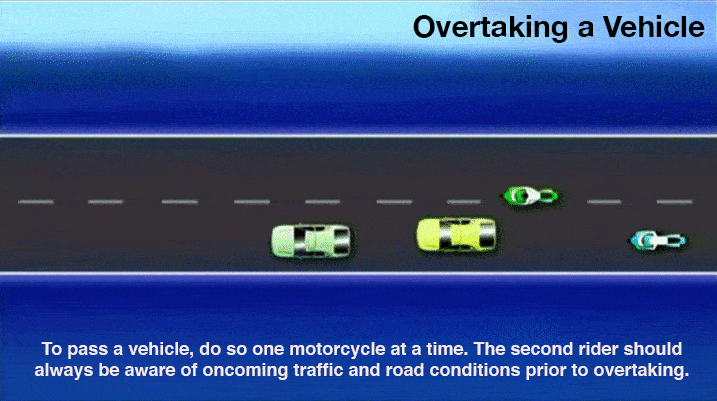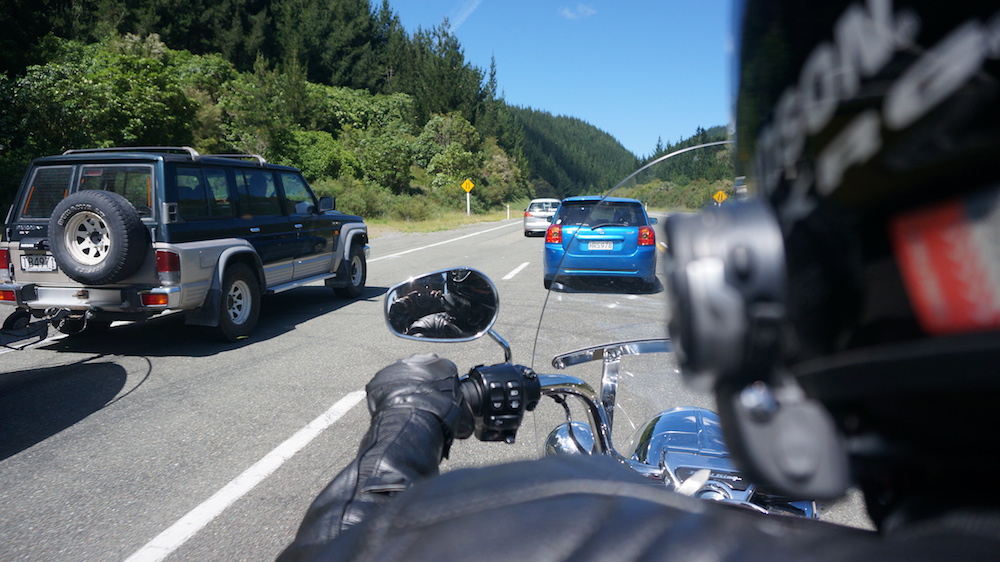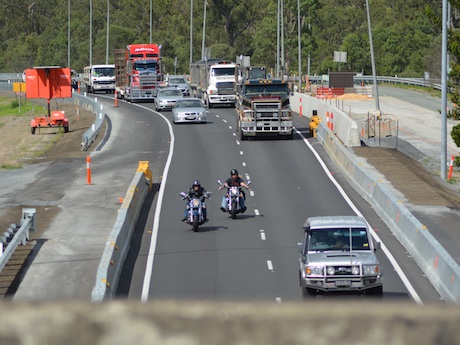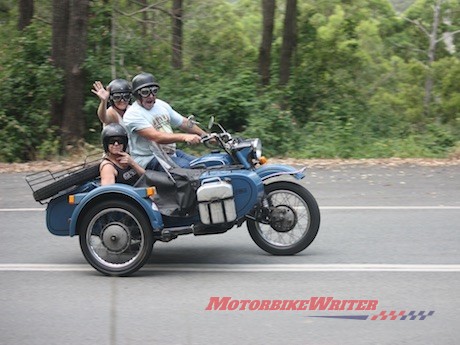One of the great joys and advantages of riding a motorcycle is being able to quickly, efficiently and safely overtake slower vehicles.
However, there are right and wrong ways to do it.
It would seem like a fairly simple task, but many riders get it wrong from both safety and legal issues.
Many riders follow too closely before overtaking, pass too closely to the vehicle and cut in too soon in front.
Following distance
We have already covered reasons riders tailgate other motorists.
READ ABOUT FOLLOWING TOO CLOSELY
There is no need to follow closely to overtake quickly.
You can sit a safe distance behind a vehicle and, thanks to the rapid acceleration of a motorcycle, overtake them in a short space of time.
Sitting back from a vehicle allows them to see your headlight in their mirrors.
It’s a good idea to switch wheel tracks a couple of times or gently weave around in your lane so the driver is alerted to your presence.
Another reason not to follow too closely is that it obscures your forward vision.
Sit further back and you will be able to see a longer and safer distance down the road to check for oncoming traffic and other obstacles such as road surface problems, stray livestock or wildlife.
Wheel tracks

Before overtaking, move to the driver’s side wheel track, a little outside the edge of the vehicle in front.
This will put you in the driver’s wing mirror, give you a good vision of the road ahead and allow approaching traffic to see you.
You not only need to scan the road ahead for approaching traffic and obstacles, but also for turnoffs.
These can be side streets or property entrances that the driver may suddenly decide to take without indicating.
Passing manoeuvre
Before overtaking, check over your shoulder and in your mirrors to see if you are being overtaken!
Start your indicators for a couple of seconds before moving, but don’t wait too long or other traffic may believe you have accidentally hit your indicators.
When you start to overtake, move immediately into the farthest wheel track from the vehicle.
Don’t sit in the closest wheel track as you will be in the driver’s blind spot.

Riding in the farthest wheel track from the vehicle you are overtaking gives you the biggest buffer in case the driver decides to overtake a vehicle in front of them or suddenly turns across in front of you.
Also, if the vehicle you are passing has a blowout, you will be farther away from any shrapnel.
Even the farthest wheel track may still be in the driver’s blind spot, so you need to accelerate swiftly up to the point where you are right alongside the driver.
Now that the driver has seen you, start moving into the closer wheel track while you accelerate past.
While you should avoid speeding, I would rather break the law and speed for a short time and clear the vehicle than sit alongside for a long period as you crawl past.
The shortest time you can spend heading toward oncoming traffic, the better and safer!
When you start to move in, it is a legal requirement to indicate again.
Cutting back in
I’ve seen many riders cut in sharply after overtaking a vehicle.
Sometimes it is done in anger or frustration after being held up by an inconsiderate driver.
However, there is no point in road rage. Besides, it is illegal to cut in close on a vehicle you have passed.
Once in front of the vehicle, stay in the driver’s wheel track and claim the lane.
However, if you are being followed in your overtaking manoeuvre by another motorcycle, move ahead and leave a gap.
That will allow them to slip in behind you in the passenger wheel track.
When you’ve passed, don’t slow down. Continue to ride at your faster pace, having regard for the speed limits, of course!
Passing another motorcycle
It is legal in many jurisdictions to pass a motorcycle in the same lane.
In fact, it may also be legal in your area for two motorcycles to share a lane and for a third to overtake in that lane.
However, three motorcycles beside each other in one lane is dangerous.
Since riders often move from wheel track to wheel track within a lane, it is important that the rider you are about to pass knows you are there.
Maybe give them a quick honk on the horn to alert them.
Multiple bikes
If you are riding in a group or even with another rider, it is safer to pass one at a time.
The second rider does not have sufficient visibility to overtake at the same time as the first rider.
After the first rider overtakes, they should leave sufficient distance between them and the vehicles they pass.

They should stay in the driver’s wheel track and their fellow rider should slot in behind and to the passenger wheel track.
Undertaking
Avoid undertaking. It is illegal in many countries — for good reason — even on multi-lane roads.
While motorists on multi-lane highways may expect people to pass on the driver’s side, they may not be aware of a bike passing on the passenger side and may suddenly move over on you.
Similarly, riders won’t expect another rider to pass up the inside, especially in the same lane!
Thank-you wave
I often give the driver of the vehicle I have passed a polite wave.
It’s not only good karma, but it might also prevent them from tailgating you.
It might also make them more aware of motorcycles and more likely to move over or slow down to let riders overtake in the future.






